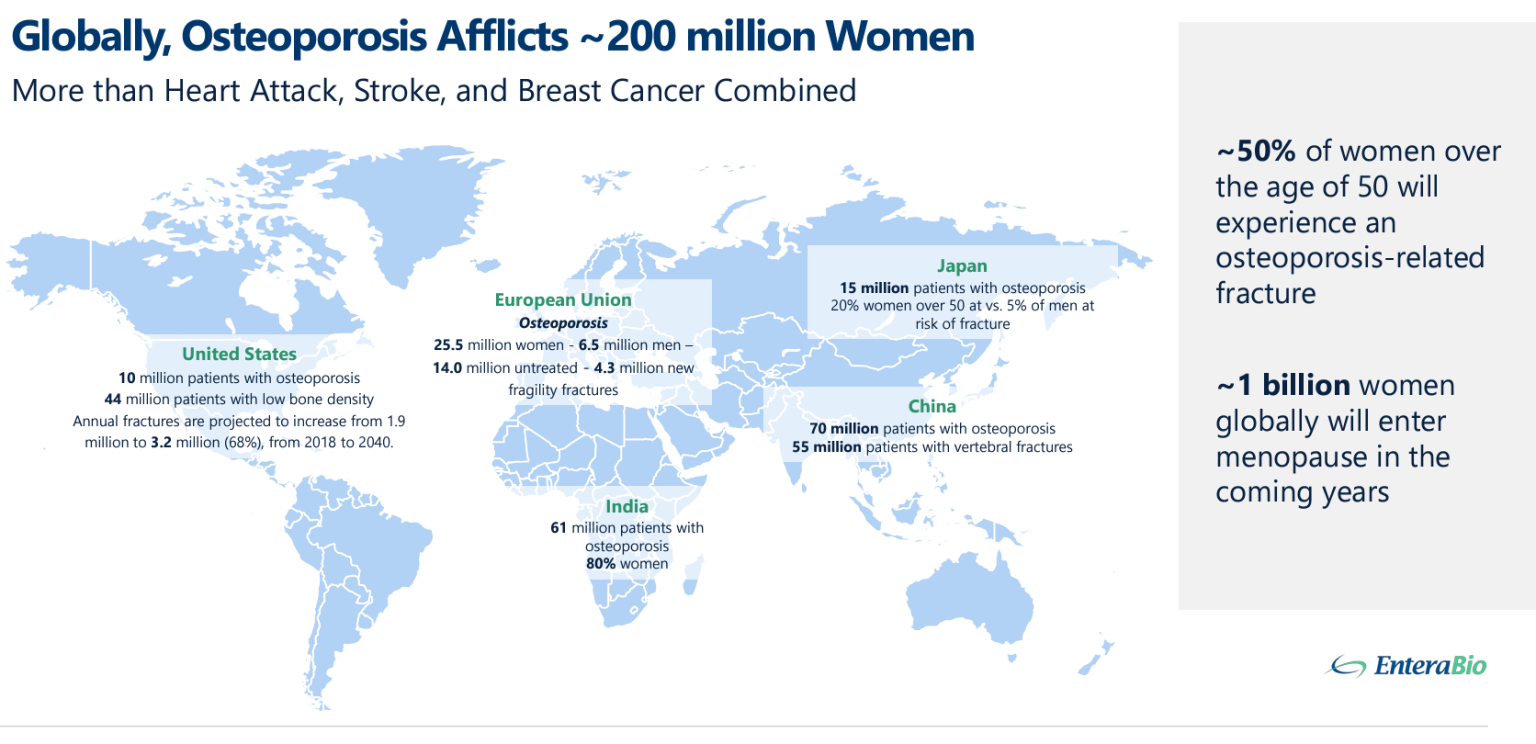Osteoporosis
The silent disease affecting 200 million women worldwide
Overview
Osteoporosis is a disease characterized by low bone mass and structural deterioration of bone tissue, which leads to greater fragility of bones and an increase in fracture risk.
The bone remodeling cycle can be separated into two distinct processes: (i) bone resorption, where cells called osteoclasts function in the resorption of mineralized tissue and (ii) bone formation, where cells called osteoblasts are responsible for bone matrix synthesis and subsequent mineralization of the bone. In healthy individuals, bone resorption is matched by new bone formation.
Osteoporosis develops as the balance between bone resorption by osteoclasts and bone formation by osteoblasts is not maintained, and not enough bone tissue is formed, leading to frail and fracture-prone bones.

Market Need Driven by Aging Population
Osteoporosis is a global public health problem currently affecting more than 200 million people worldwide. Of the estimated 15 million patients diagnosed with osteoporosis in the United States, 13 million are women. According to recent statistics from the International Osteoporosis Foundation, worldwide, 1 in 3 women over the age of 50 years and 1 in 5 men will experience osteoporotic fractures in their lifetime.
Osteoporosis results in a decreased quality of life, increased disability-adjusted life span, and a tremendous financial burden to health insurance system. In the United States, for women aged 55 years and older, the hospitalization burden of osteoporotic fractures and population facility-related hospital cost is greater than that of heart attack, stroke, or breast cancer.

Unmet Need
It is estimated that approximately 3.2 million patients are treated with osteoporosis medication in the U.S. alone. However, less than 10% of osteoporosis patients use current anabolic (bone building) drugs. Despite the validated mechanism of action of these treatments, patients are deterred by their high cost and injectable mode of administration.
Instead, the most prescribed class of drugs for osteoporosis are bisphosphonates, which come in more convenient oral administration regimens.
There exists a treatment gap due to poor patient acceptance of injectible anabolic drugs. There are currently no FDA-approved oral anabolic treatments for osteoporosis.
